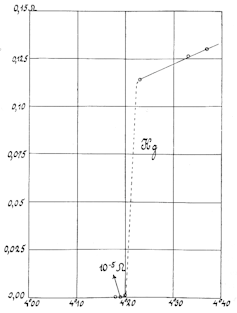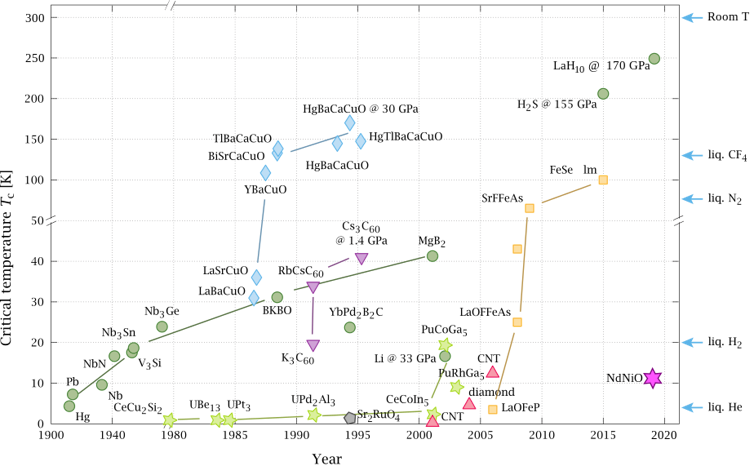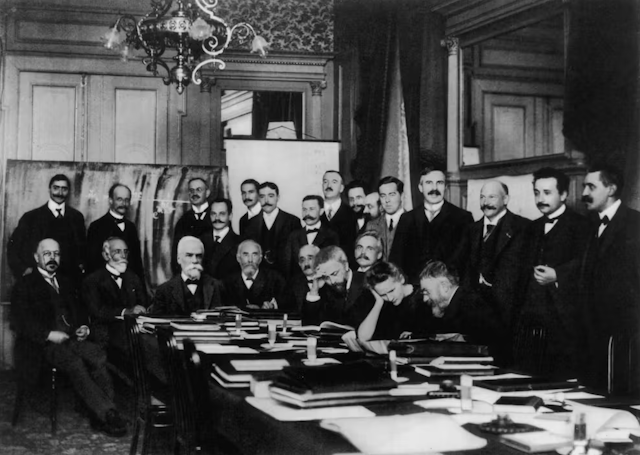On April 8, 1911, Dutch physicist Heike Kamerlingh Onnes scribbled in pencil an almost unintelligible note into a kitchen notebook: “near enough null.”
The note referred to the electrical resistance he’d measured during a landmark experiment that would later be credited as the discovery of superconductivity. But first, he and his team would need many more trials to confirm the measurement.
Their discovery opened up a world of potential scientific applications. The century since has seen many advances, but superconductivity researchers today can take lessons from Onnes’ original, Nobel Prize-winning work.
I have always been interested in origin stories. As a physics professor and the author of books on the history of physics, I look for the interesting backstory – the twists, turns and serendipities that lie behind great discoveries.
The true stories behind these discoveries are usually more chaotic than the rehearsed narratives crafted after the fact, and some of the lessons learned from Onnes’ experiments remain relevant today as researchers search for new superconductors that might, one day, operate near room temperature.
Superconductivity
A rare quantum effect that allows electrical currents to flow without resistance in superconducting wires, superconductivity allows for a myriad of scientific applications. These include MRI machines and powerful particle accelerators.
Imagine giving a single push to a row of glass beads strung on a frictionless wire. Once the beads start moving down the wire, they never stop, like a perpetual motion machine. That’s the idea behind superconductivity – particles flowing without resistance.
For superconductors to work, they need to be cooled to ultra-low temperatures colder than any Arctic blast. That’s how Onnes’ original work cooling helium to near absolute zero temperature set the stage for his unexpected discovery of superconductivity.
The discovery
Onnes, a physics professor at the University of Leiden in the Netherlands, built the leading low-temperature physics laboratory in the world in the first decade of the 20th century.
His lab was the first to turn helium from a gas to a liquid by making the gas expand and cool. His lab managed to cool helium this way to a temperature of -452 degrees Farenheit (-269 degrees Celsius).
Onnes then began studying the electrical conductivity of metals at these cold temperatures. He started with mercury because mercury in liquid form can conduct electricity, making it easy to fill into glass tubes. At low temperatures, the mercury would freeze solid, creating metallic wires that Onnes could use in his conductivity experiments.
On April 8, 1911, his lab technicians transferred liquid helium into a measurement cryostat – a glass container with a vacuum jacket to insulate it from the room’s heat. They cooled the helium to -454 F (-270 C) and then measured the electrical resistance of the mercury wire by sending a small current through it and measuring the voltage.
It was then that Onnes wrote the cryptic “near enough null” measurement into his kitchen notebook, meaning that the wire was conducting electricity without any measurable resistance.
That date of April 8 is often quoted as the discovery of superconductivity, but the full story isn’t so simple, because scientists can’t accept a scribbled “near-enough null” as sufficient proof of a new discovery.
In pursuit of proof
Onnes’ team performed its next experiment more than six weeks later, on May 23. On this day, they cooled the cryostat again to -454 F (-270 C) and then let the temperature slowly rise.
At first they barely measured any electrical resistance, indicating superconductivity. The resistance stayed small up to -452 F, when it suddenly rose by over a factor of 400 as the temperature inched up just a fraction of a degree.
The rise was so rapid and so unexpected that they started searching for some form of electrical fault or open circuit that might have been caused by the temperature shifts. But they couldn’t find anything wrong. They spent five more months improving their system before trying again. On Oct. 26 they repeated the experiment, capturing the earlier sudden rise in resistance.

One week later, Onnes presented these results to the first Solvay Conference, and two years later he received his Nobel Prize in physics, recognizing his low-temperature work generally but not superconductivity specifically.
It took another three years of diligent work before Onnes had his irrefutable evidence: He measured persistent currents that did not decay, demonstrating truly zero resistance and superconductivity on April 24, 1914.
New frontiers for critical temperatures
In the decades following Onnes’ discovery, many researchers have explored how metals act at supercooled temperatures and have learned more about superconductivity.
But if researchers can observe superconductivity only at super low temperatures, it’s hard to make anything useful. It is too expensive to operate a machine practically if it works only at -400 F (-240 C).
So, scientists began searching for superconductors that can work at practical temperatures. For instance, K. Alex Müller and J. Georg Bednorz at the IBM research laboratory in Switzerland figured out that metal oxides like lanthanum-barium-copper oxide, known as LBCO, could be good candidates.
It took the IBM team about three years to find superconductivity in LBCO. But when they did, their work set a new record, with superconductivity observed at -397 F (-238 C) in 1986.
A year later, in 1987, a lab in Houston replaced lanthanum in LBCO with the element yttrium to create YBCO. They demonstrated superconductivity at -292 F. This discovery made YBCO the first practical superconductor, because it could work while immersed in inexpensive liquid nitrogen.
Since then, researchers have observed superconductivity at temperatures as high as -164 F (-109 C), but achieving a room-temperature superconductor has remained elusive.

In 2023, two groups claimed they had evidence for room-temperature superconductivity, though both reports have been met with sharp skepticism, and both are now in limbo following further scrutiny.
Superconductivity has always been tricky to prove because some metals can masquerade as superconductors. The lessons learned by Onnes a century ago – that these discoveries require time, patience and, most importantly, proof of currents that never stop – are still relevant today.

